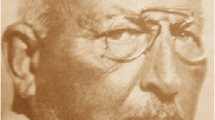Summary
Autologous and homologous transplants of the incur were performed in rabbits. In addition, bone chips from the lateral attic wall were wedged between malleus and stapes. Results were assessed histologically. The ultimate integration into the host tissues was very much the same for both types of graft materials as well as for autologous and homologous transplants. It was only during the first few weeks that the autologous bone was more rapidly accepted by the host tissues (because of the lacking antigen/antibody reaction) than the homologous transplants. The latter did not show apposition of newly formed osteoid tissue until the 20th, or even the 30th day. Even after nine to twelve months, the autologous transplants, and similarly the homologous ones, revealed devitalized graft tissues of varying size. The present results indicate the suitability of homologous incur transplants either preserved in Cialit or in lyophilized form for the repair of defects in the ossicular chain. Although, usually, homologous tissues are partially absorbed, it must be emphasized that an autologous incur does not constitute an ideal substitute either because of the resultant osteitic changes.
Zusammenfassung
Das Verhalten autogener und allogenen Transplantate von Amboß und Knochenspänen bei Kaninchen wind histologisch nach verschiedener Verweildauer untersucht. Die endgültigen Umbauvorgänge autogener und allogener Transplantate sind weitgehend ähnlich. Eine Diskrepanz besteht lediglich in den ersten Wochen den Ein- und Umbauvorgange, da beim autogenen Knochen-Transplantat wegen der Wegfalls den Antigen-Antikörper-Reaktion ein kontinuierlicher Knochenumbau zu beobachten ist, wohingegen die allogenen Knochen-Transplantate erst nach dem 20.–30. Tag nach den Übertragung eine Anlagerung von wirtseigenem osteoiden Gewebe zeigen. Auch nach 9–12 Monaten zeigen sich an den autogenen Transplantaten, ähnlich den allogenen Transplantaten, noch unterschiedlich große Bezirke von devitalem Transplantatgewebe. Auf Grund dieser Ergebnisse kann man sagen, daß sich den allogene Amboßersatz mit Cialit-konserviertem und lyophilisiertem Knochengewebe zur Überbrückung von Schallleitungsketten-Defekten im Sinne den Transposition oder Interposition, ähnlich autogenen Amboß-Transplantaten, eignet. Selbst unter Berücksichtigung gewisser Teildestruktionen der allogenen Gehörknöchelchen-Transplantate auf Grund immunologischer Vorgänge muß man doch bedenken, daß den häufig zur Transposition verwendete eigene Amboßkörper auf Grund seiner ostitischen Veränderungen sicher auch kein ideales Material im Sinne eines potenten, osteoinduktiv wirkenden Spanes darstellt.
Similar content being viewed by others
Literatur
Abbott, L. C.: The evulation of cortical and cancellous bone as grafting material. J. Bone Jt Surg. A29, 381 (1947).
Axhausen, G.: Histologische Untersuchungen über Knochentransplantationen am Menschen. Dtsch. Z. Chir.91, 388 (1908); zit. nach W. Axhausen: Arch. klin. Chir.266, 381 (1950).
Axhausen, W.: Die Bedeutung der Individual- und Artspezifität der Gewebe für die freie Knochenüberpflanzung. Hefte zur Unfallheilk.72 (1962). Berlin-Göttingen-Heidelberg: Springer 1962.
Beck, Chl.: Das Verhalten ins Mittelohr implantierter auto- und homoioplastischer Knochenspäne im Tierexperiment. Arch. Ohr.-, Nas.- u. Kehlk.-Heilk.179, 111 (1961).
Belucci, R.: Polyethylene tubing in bypass surgery of the stapes. Arch. Otolaryng.73, 513 (1960).
Burian, K.: Vergleichende klinische und histologische Untersuchungen über das Verhalten von frischen autoplastischen und konservierten homoioplastischen Cutistransplantaten in Ohroperationshöhlen. Mschr. Ohrenheilk.89, 21 (1955).
Burian, K.: Vergleichende klinische Untersuchungen an autoplastischen und konservierten homoioplastischen Hauttransplantaten bei je 75 Fallen von Tympanoplastiken. Arch. Ohr.-, Nas.- u. Kehlk.-Heilk.171, 116 (1957/58).
Burwell, R. G.: Studies in the transplantation of bone. J. Bone Jt Surg. B45, 386 (1963).
Choen, J., Lacroix, P.: Bone and cartilage formation by periosteum. Issay of experimental autogenous grafts. J. Bone Jt Surg. A37, 717 (1955).
Conway, H., Joslin, D.: Observation on the development of circulation in skin grafts. I. Technique of adaption of the transparent chamber technique to study the circulation in skin grafts. Plast. reconstr. Surg.8, 194 (1951).
Conway, H., Stark, R. D.: Observation on the development of circulation in skin grafts. II. The physiologic pattern of early circulation in autografts. Plast. reconstr. Surg.8, 312 (1951).
Ecke, H.: None Wege der quantitativen Bestimmung der ossären Regeneration an Knochentransplantaten. Langenbecks Arch. klin. Chir.319, 448 (1967).
Frost, H. M.: Micropetrosis. J. Bone Jt Surg. A42, 144 (1960).
Guilford, F. R.: Tympanoplasty use of prostheses in conduction mechanism. Arch. Otolaryng.69, 70 (1959).
Hall, A., Rytzner, C.: Autotransplantation of ossicles. Arch. Otolaryng.74, 22 (1961).
Hoppe-Seyler, E. F., Tierfelder, H.: Bausteine des Tierkörpers. Handbuch der physiolog-pathol-chew. Analyse, Bd. II, S. 450. Berlin-Göttingen-Heidelberg: Springer 1962.
House, W. F.: Homograft transplantat of the middle car. Acta oto-rhino-laryng. belg.24, 132 (1970).
Jakob, F., Monod, J.: Genetic regulatory mechanism in the synthesis of proteins. J. molec. Biol.3, 318 (1961); zit. nach H. Ecke: Die Transplantation der Epiphysenfuge (1967).
Kley, W., Draf W.: Histologische Untersuchungen über autotransplantierte Gehörknöchelchen und Knochenstücke im Mittelohr beim Menschen. Acta otolaryng. (Stockh.) 59, 593 (1965).
Koch, H.: Experimentelle Studien über Knochenregeneration. Bruns' Beitr. klin. Chir.132, 364 (1924).
Maatz, R.: Der Tierspan in der Knochenbank. Dtsch. med. J.8, 190 (1957).
Matthi, H.: Über freie Transplantation von Knochenspongiosa. Langenbecks Arch. klin. Chir.168, 236 (1932).
Plester, D.: Die Anwendung prothetischen Materials im Mittelohr. Mschr. Ohrenheilk.2, 105 (1968).
Rosin, A., Freiberg, H.: The fate of rat bone marrow, spleen and periosteum cultivated in vivo in the diffusion chamber with special reference to the bone formation. Exp. Cell Res.29, 176 (1963); zit. nach Schweiberer: Hefte Unfallheilk., H. 103. Berlin-Heidelberg-New York: Springer 1970.
Schenk, R., Willenegger, H.: Zur Histologic der primären Knochenheilung. Langenbecks Arch. klin. Chir.308, 440 (1964).
Schuknecht, H. F.: The metal prothesis for stapes ankylosis. Arch. Otolaryng.71, 287 (1960).
Schweiberer, L.: Experimentelle Untersuchungen von Knochentransplantaten mit unveränderter und mit denaturierter Knochengrundsubstanz. Hefte Unfallheilk., H. 103. Berlin-Heidelberg-New York: Springer 1970.
Seiffert, K. E.: Biologische Grundlagen der homologen Transplantation konservierter Bindegewebe. Hefte Unfallheilk., H. 93. Berlin-Heidelberg-New York: Springer 1967.
Seiffert, K. E.: Biological aspects of collagenous homografts. Acta oto-rhinolaryng. belg.24, 27 (1970).
Zöllner, F.: Technik der Formung einer Columella aus Knochen. Z. Laryng. Rhinol39, 536 (1960).
Author information
Authors and Affiliations
Rights and permissions
About this article
Cite this article
Kastenbauer, E.R. II. Die umbauvorgänge in autogenen und allogenen gehorknöchelchentransplantaten im tierexperiment. Arch. klin. exp. Ohr.-, Nas.- u. Kehlk. Heilk. 203, 58–69 (1972). https://doi.org/10.1007/BF00344564
Received:
Issue Date:
DOI: https://doi.org/10.1007/BF00344564




